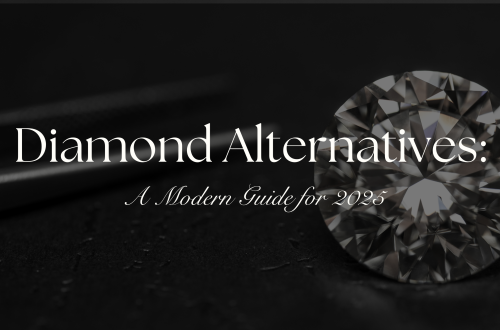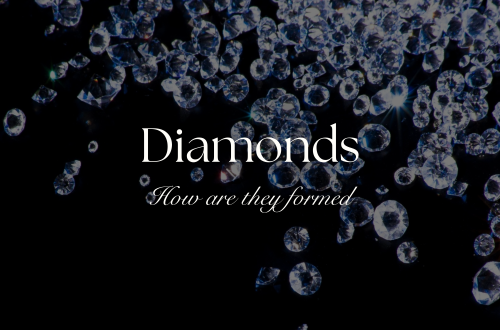I should start by saying that my interest in stones is purely from the gemology and esthetic point of view, and any spiritual information is not something this article will provide for you.
With that said:
Birthstones have captivated humanity for centuries, linking the beauty of gemstones with the calendar months and personal identity. Alongside the primary birthstones, alternative birthstones offer additional choices that add variety and significance.
I wanted to bring to you a guide that would allow you to understand your birthstone and those of your loved one a little bit better, This guide is here to do just that.
January
Primary Birthstone: Garnet
- Historical Significance: Garnet symbolizes protection, strength, and eternal friendship.
- Composition: Group of silicate minerals, most commonly almandine (Fe₃Al₂(SiO₄)₃).
- Hardness: 6.5–7.5 on the Mohs scale.
- Density: 3.5–4.3 g/cm³.
- Primary Sources: India, Madagascar, Sri Lanka, and the U.S.

Alternative Birthstone: Rose Quartz
- Historical Significance: Known as the “love stone,” rose quartz is believed to promote emotional healing.
- Composition: Quartz (SiO₂) colored by trace elements like titanium or manganese.
- Hardness: 7 on the Mohs scale.
- Density: 2.65 g/cm³.
- Primary Sources: Brazil, Madagascar, and South Africa.

February
Primary Birthstone: Amethyst
- Historical Significance: The Ancient Greeks believed amethyst prevented intoxication.
- Composition: Purple quartz (SiO₂) colored by iron and natural radiation.
- Hardness: 7 on the Mohs scale.
- Density: 2.65 g/cm³.
- Primary Sources: Brazil, Uruguay, Zambia, and Russia.

Alternative Birthstone: Onyx
- Historical Significance: Onyx was revered for protection and grounding in many cultures.
- Composition: Chalcedony (SiO₂) with bands of quartz.
- Hardness: 6.5–7 on the Mohs scale.
- Density: 2.55–2.70 g/cm³.
- Primary Sources: Brazil, India, and Madagascar.

March
Primary Birthstone: Aquamarine
- Historical Significance: Associated with the sea, aquamarine symbolizes courage and calm.
- Composition: Blue-green beryl (Be₃Al₂(Si₆O₁₈)).
- Hardness: 7.5–8 on the Mohs scale.
- Density: 2.68–2.91 g/cm³.
- Primary Sources: Brazil, Madagascar, and Nigeria.

Alternative Birthstone: Bloodstone
- Historical Significance: Believed to bring strength and purification.
- Composition: A dark green variety of chalcedony with red spots of iron oxide.
- Hardness: 6.5–7 on the Mohs scale.
- Density: 2.6–2.7 g/cm³.
- Primary Sources: India, Australia, and the Czech Republic.

April
Primary Birthstone: Diamond
- Historical Significance: Symbolizes eternal love and strength.
- Composition: Pure carbon (C).
- Hardness: 10 on the Mohs scale.
- Density: 3.5 g/cm³.
- Primary Sources: Russia, Botswana, Canada, and Australia.

Alternative Birthstone: White Sapphire
- Historical Significance: A symbol of purity and wisdom, offering an ethical alternative to diamonds.
- Composition: Corundum (Al₂O₃).
- Hardness: 9 on the Mohs scale.
- Density: 3.95–4.03 g/cm³.
- Primary Sources: Sri Lanka, Madagascar, and Australia.

May
Primary Birthstone: Emerald
- Historical Significance: Associated with rebirth, love, and fertility.
- Composition: Green beryl (Be₃Al₂(Si₆O₁₈)) with chromium and vanadium.
- Hardness: 7.5–8 on the Mohs scale.
- Density: 2.7–2.8 g/cm³.
- Primary Sources: Colombia, Zambia, and Brazil.

Alternative Birthstone: Chrysoprase
- Historical Significance: Symbolizes growth and happiness.
- Composition: A variety of chalcedony (SiO₂) colored by nickel.
- Hardness: 6–7 on the Mohs scale.
- Density: 2.6 g/cm³.
- Primary Sources: Australia, Brazil, and Tanzania.

June
Primary Birthstone: Pearl
- Historical Significance: A symbol of purity and wisdom.
- Composition: Organic, composed of aragonite (CaCO₃) and conchiolin.
- Hardness: 2.5–4.5 on the Mohs scale.
- Density: 2.60–2.85 g/cm³.
- Primary Sources: Japan, China, and Australia.

Alternative Birthstones: Moonstone and Alexandrite
Moonstone
- Historical Significance: Represents intuition and emotional balance.
- Composition: A feldspar mineral (KAlSi₃O₈).
- Hardness: 6–6.5 on the Mohs scale.
- Density: 2.56–2.60 g/cm³.
- Primary Sources: Sri Lanka, India, and Madagascar.

Alexandrite
- Historical Significance: Known for its color-changing property and connection to prosperity.
- Composition: A variety of chrysoberyl (BeAl₂O₄) with chromium.
- Hardness: 8.5 on the Mohs scale.
- Density: 3.5–3.84 g/cm³.
- Primary Sources: Russia, Brazil, and Sri Lanka.

July
Primary Birthstone: Ruby
- Historical Significance: Known as the “King of Gems,” symbolizing passion and vitality.
- Composition: Corundum (Al₂O₃) with chromium.
- Hardness: 9 on the Mohs scale.
- Density: 3.97–4.05 g/cm³.
- Primary Sources: Myanmar, Mozambique, and Thailand.

Alternative Birthstone: Carnelian
- Historical Significance: Associated with courage and creativity.
- Composition: A variety of chalcedony (SiO₂) with iron oxide.
- Hardness: 6.5–7 on the Mohs scale.
- Density: 2.58–2.64 g/cm³.
- Primary Sources: Brazil, India, and Uruguay.

August
Primary Birthstone: Peridot
- Historical Significance: Known as the “gem of the sun,” symbolizing prosperity.
- Composition: Olivine ((Mg, Fe)₂SiO₄).
- Hardness: 6.5–7 on the Mohs scale.
- Density: 3.2–4.3 g/cm³.
- Primary Sources: Arizona (USA), China, and Pakistan.

Alternative Birthstone: Spinel
- Historical Significance: Often mistaken for rubies in history, spinel represents vitality and energy.
- Composition: Magnesium aluminum oxide (MgAl₂O₄).
- Hardness: 7.5–8 on the Mohs scale.
- Density: 3.5–4.1 g/cm³.
- Primary Sources: Myanmar, Sri Lanka, and Tanzania.

September
Primary Birthstone: Sapphire
- Historical Significance: Represents wisdom and royalty.
- Composition: Corundum (Al₂O₃) with trace elements.
- Hardness: 9 on the Mohs scale.
- Density: 3.95–4.03 g/cm³.
- Primary Sources: Sri Lanka, Kashmir, and Madagascar.

Alternative Birthstone: Lapis Lazuli
- Historical Significance: A symbol of truth and enlightenment.
- Composition: A rock containing lazurite, calcite, and pyrite.
- Hardness: 5–5.5 on the Mohs scale.
- Density: 2.7–2.9 g/cm³.
- Primary Sources: Afghanistan, Chile, and Russia.

October
Primary Birthstone: Opal
- Historical Significance: Symbolizes hope and creativity.
- Composition: Hydrated silica (SiO₂·nH₂O).
- Hardness: 5.5–6.5 on the Mohs scale.
- Density: 1.98–2.25 g/cm³.
- Primary Sources: Australia, Ethiopia, and Brazil.

Alternative Birthstone: Tourmaline
- Historical Significance: Known for its variety of colors and connection to emotional healing.
- Composition: Complex borosilicate with varying elements.
- Hardness: 7–7.5 on the Mohs scale.
- Density: 3.0–3.3 g/cm³.
- Primary Sources: Brazil, Afghanistan, and Mozambique.

November
Primary Birthstone: Topaz
- Historical Significance: Symbolizes strength and intelligence.
- Composition: Fluorosilicate mineral (Al₂SiO₄(F,OH)₂).
- Hardness: 8 on the Mohs scale.
- Density: 3.49–3.57 g/cm³.
- Primary Sources: Brazil, Pakistan, and Russia.

Alternative Birthstone: Citrine
- Historical Significance: Believed to bring prosperity and warmth.
- Composition: A yellow variety of quartz (SiO₂).
- Hardness: 7 on the Mohs scale.
- Density: 2.65 g/cm³.
- Primary Sources: Brazil, Madagascar, and Bolivia.

December
Primary Birthstone: Turquoise
- Historical Significance: Associated with protection and serenity.
- Composition: Hydrated phosphate of copper and aluminum (CuAl₆(PO₄)₄(OH)₈·4H₂O).
- Hardness: 5–6 on the Mohs scale.
- Density: 2.6–2.9 g/cm³.
- Primary Sources: Iran, the U.S., and China.

Alternative Birthstones: Tanzanite and Zircon
Tanzanite
- Historical Significance: A modern gem associated with transformation and insight.
- Composition: Zoisite (Ca₂Al₃(SiO₄)₃(OH)).
- Hardness: 6–7 on the Mohs scale.
- Density: 3.10–3.38 g/cm³.
- Primary Sources: Tanzania.

Zircon
- Historical Significance: Often confused with diamonds, zircon represents wisdom and wealth.
- Composition: Zirconium silicate (ZrSiO₄).
- Hardness: 6–7.5 on the Mohs scale.
- Density: 4.6–4.7 g/cm³.
- Primary Sources: Cambodia, Sri Lanka, and Australia.






